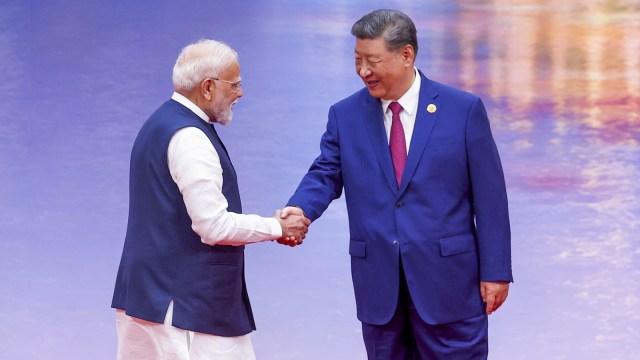
Prime Minister Narendra Modi’s first visit to China since 2018 is a reminder that, in international relations, change is the only constant. The story of India-China ties is a feast for foreign policy aficionados. Even in the distant past, when both countries had relatively less salience in the international system, their relations had significance that went beyond the purely bilateral. External factors and developments impact the relationship. Today, those linkages are far more acute and consequential.
The lessons of history are invaluable. In this case, they suggest that sharp swings to either end of the spectrum occur, but do not endure. The search to find and then maintain an equilibrium that is both stable and predictable has informed India’s China policy over the decades. This is perhaps the best way to make sense of the Tianjin summit.
Notably, the rebuilding process has been navigated through two major exogenous developments: The headwinds of the Pahalgam terrorist attack and China’s military and intelligence backstopping of Pakistan during Operation Sindoor, and the tailwinds of US President Donald Trump’s trade war against India. China has seen with equal bewilderment the abnormal and forced courting of Field Marshal Asim Munir personally and of Pakistan generally by the US. The view that the Trump administration has succeeded in pushing India into China’s arms despite Beijing’s role during Operation Sindoor is not without foundation but is somewhat of an exaggeration, given the complexities of the India-China relationship. It is perhaps more accurate to say that the rapprochement has been accelerated and fast-tracked. The uncertainty about the likely shape and form of a US-China relationship under an unpredictable US President may have also contributed.
India has to find that delicate balance between short and long-term interests, economic and strategic calculations, and between China’s vision of the world and India’s. PM Modi made sure that his road to Tianjin went via Tokyo. The significant economic and security announcements made during his visit to Japan are a message to Beijing, and to Washington, of the breadth of economic choices India will retain and successfully exercise on the global stage. China’s periphery is as much fair game for India as India’s is for China, except that Pakistan is no Japan. India is not about to simply hand over Asia to China. Trust in the relationship will require much greater transparency in the policies both countries pursue in their common neighbourhood.
The terms of trade, and the larger economic relationship between India and China, have steadily worsened for India. There is nothing really “bilateral” about India’s trade with China. Almost 90 per cent of total trade is unilateral, in one direction: China’s exports to India. If the current trend continues, India will have succeeded in outsourcing its manufacturing future to China, and worse, becoming an economic subsidiary of China. American economic pundits should be more worried about India earning dollars off American consumers and spending them in China rather than their meltdown over India using US dollars to supposedly fund Putin’s war in Ukraine.
Meanwhile, China is getting good at the “weaponisation of dependencies” game. In addition, it is sitting on surplus capital and excess capacity. Its export of both to India in the form of FDI as against goods will be accompanied with technology choices which by nature are irreversible, and often involve strategic sectors. It is not without design that India has chosen, for example, Japanese bullet train technology, or taken the more difficult route to develop indigenous 5G and 6G technologies in the face of ready availability of both from China.
The invocation of the Panchsheel principles by President Xi Jinping in his meeting with Prime Minister Modi is most interesting. It reflects a leap of faith and a certain Chinese assessment of the current historical stage of the relationship. Unfortunately, for India, the Panchsheel era is synonymous with betrayal.
On balance, the Tianjin summit has consolidated the process that began in Kazan and set the stage for stabilisation in the India-China relationship. Both leaders have referred to being partners. This is to be welcomed. There are no ideal relationships. All, especially those involving major powers, have imperfections. Major powers by definition are wired to first and foremost safeguard their interests, and ensure they retain their status. The proposition that India will have smoother sailing in the choppy waters of international politics by aligning with one or the other alliance system or set of countries is contestable and fraught with risk, as it is now appearing with the sudden turn of events in the US attitude towards India. Europe is learning this the hard way — it has not allowed its transatlantic alliance to come in the way of a massive economic relationship with China.
The writer is convenor, NatStrat, former deputy national security adviser and former ambassador to Russia